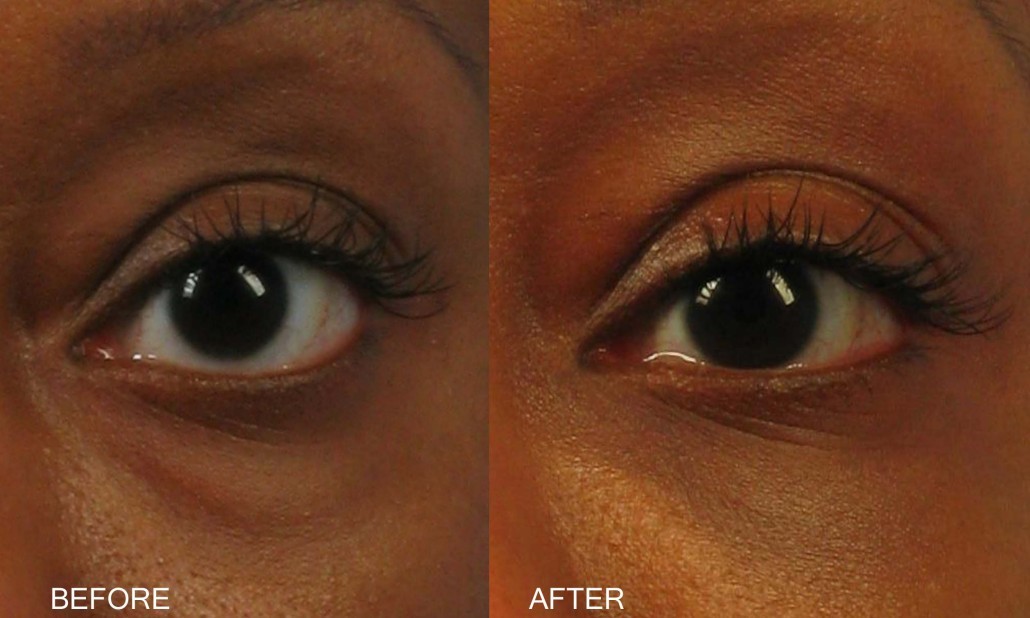What it treats
Bulging lower eyelid fat is improved with fat pad reduction. Bulging lower eyelid fat (orbital fat) exists in three sections, medial, central, and lateral. Any or all of these can be addressed. Fat redraping or repositioning treats bulging fat pads and lower eyelid hollowing at the same time. The prominence of the fat pouches (steatoblepharon) and the concavity below the fat (tear trough) contribute to the appearance of lower eyelid bags and dark circles. This procedure can be performed on its own or with other lower blepharoplasty maneuvers (e.g. skin pinch blepharoplasty).
How it is done
Pre-surgical marking
The bulging fat pouches are delineated with a surgical marker with the patient in the seated position. Areas of hollowing are also noted.
Local anesthetic
A topical numbing eye drop is applied to anesthetize the surface of the conjunctiva. An anesthetic fluid is injected with a small needle to numb the eyelid structures. Epinephrine is included in the numbing fluid to reduce bleeding.
Incision
The lower eyelid fat can be approached from the front of the eyelid (with an incision under the eyelash line) or from behind the eyelid (no visible scar). The incision may be created with a laser, radiofreqency device, electrosurgical needle, or scalpel.
Fat pad exposure and sculpting
The targeted fat pads are exposed. Three pads exist in the lower eyelid, medial, central, and lateral. The medial and central fat pads are separated by the inferior oblique muscle which is left undisturbed. If there is redundant fat in any of these compartments, the fat pad is reduced by removing a portion.
Fat redraping
The lower eyelid fat collections can be redraped over the lower rim of orbital bone to fill the under eye hollows. Redraping, when performed, is usually limited to the medial and central pouches. The base of the fat is left attached to its blood supply and the pedicle is positioned in a pocket created under the periosteum or orbicularis muscle. Stitches tied over a bolster on the front of the eyelid may be temporarily placed to maintain the fat placement.
Follow-up care
An ophthalmic antibiotic with or without a mild steroid is applied at regular intervals after the surgery. Swelling and/or bruising is common in the first 7 -10 days after the procedure. If removable stitches were used, they may be removed after 7 – 14 days. The behind-the-eyelid approach the fat pouches may involve dissolvable stitches or no stitches.
Potential risks
Redraped fat infrequently leads to prolonged swelling, fat cysts or granulomas, and contour irregularities. Eyelid retraction, dry eyes, and asymmetry are other risks.

